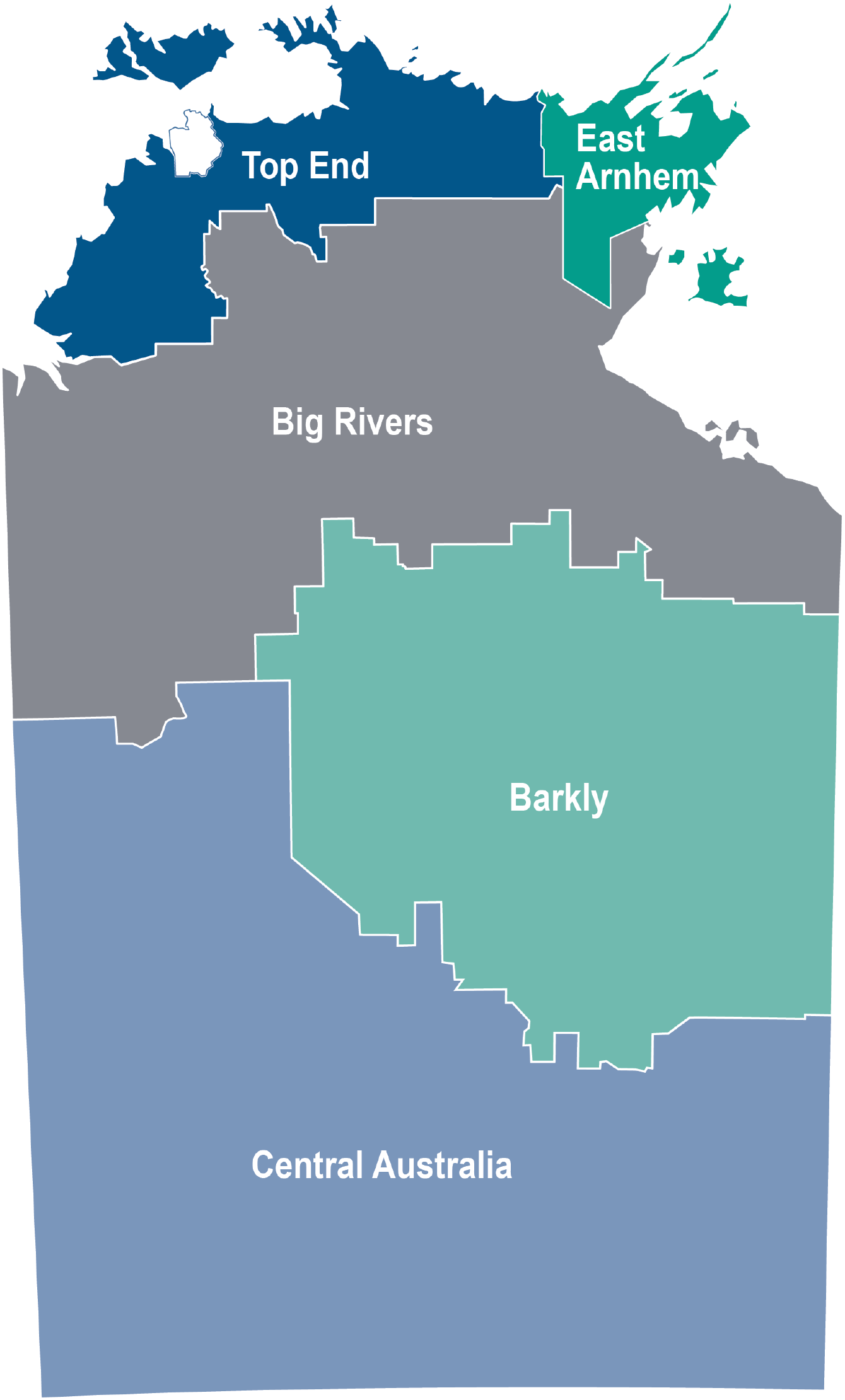Regional Overview
For all of us
The 2023-2024 NT Budget factsheets highlight the Territory as Australia’s best investment.
How we are now in the strongest position ever to welcome back tourists.
The key deliverables the Territory Government has for health, education and investing in the prevention of domestic, family and sexual violence:
- Growing the economy PDF (446.7 KB)
- Health, education and social investment PDF (362.1 KB)
- Tourism comeback PDF (662.7 KB)
- Women in the Territory PDF (557.0 KB)
- Cost of living PDF (415.4 KB)
- A safer Territory PDF (662.8 KB)
Top End region
The Top End region encompasses most of the Daly‑Tiwi-West Arnhem region extending from Wadeye in the west to Maningrida in the east. About 18,100 people live in the region with major population centres in Wadeye and Jabiru.
The region’s population is relatively young, with about 39% aged 24 years and under, and around 8% aged 65 years or older.
Major industries in the region include tourism, horticulture and forestry. Tourism is a significant contributor to economic activity in the Top End, with world-renowned attractions such as Litchfield and Kakadu national parks, as well as the Daly River for recreational fishing and camping.
Greater Darwin region
The Greater Darwin region includes the cities of Darwin and Palmerston, the Litchfield Shire, East Arm and Robertson Barracks.
The region is home to about 149,600 people, representing about 60% of the Territory’s population.
Greater Darwin has the lowest proportion of young people among the regions, with about 32% aged 24 years and under, and the highest proportion of population aged 65 years and over, at about 10%.
Darwin is the Territory’s capital city and the main administrative centre. Major industries include construction, defence, retail, tourism, education and training, public administration, community safety and health care.
Big Rivers region
Big Rivers is the Territory’s second largest region, covering almost 25% of the Territory’s land mass from the Joseph Bonaparte Gulf and Lajamanu in the west to Numbulwar and Borroloola in the east.
The region is made up of small communities separated by long distances and is home to about 21,300 people, of whom about 57%
are Aboriginal. The town of Katherine is the main centre with a population of about 10,800 people. Around 39% of the region’s population are aged 24 years and under, and about 7% are aged 65 years and over.
Major industries in the Big Rivers region include tourism, horticulture, pastoral, mining and defence.
Key tourist attractions include Nitmiluk Gorge, Leliyn (Edith Falls), Mataranka, and recreational fishing in the big rivers of the region.
Barkly region
The Barkly is the Territory’s third largest region and extends along the Stuart Highway from Tara to Elliott and east across the Barkly
Tablelands to Queensland.
The region is made up of small communities separated by long distances and is home to about 6,000 people, of whom about 71% are Aboriginal. Tennant Creek is the main centre with a population of about 3,500 people.
A high proportion of people living in the region are young, with about 39% aged 24 years and under, and about 7% aged 65 or older.
Major industries in the region include government services, agriculture, construction, and mining.
East Arnhem region
The East Arnhem region is situated in the far north‑eastern corner of the Territory and covers East Arnhem Land, Groote Eylandt and Elcho Island.
The region is home to about 14,600 people, of whom about 73% are Aboriginal, with major population centres in Nhulunbuy and Alyangula.
The population in East Arnhem is relatively young and dispersed, with about 42% aged 24 years and under and only about 4% aged
65 years and over. Major industries in the East Arnhem region include mining, buffalo farming, tourism, aquaculture and fishing.
Central Australia region
Central Australia is the Territory’s largest region, covering 42% of the total land area. The region is made up of small communities separated by long distances and is home to about 41,000 people, of whom 43.2% are Aboriginal.
Alice Springs is the main centre in the region, with a population of about 28,900. Around 34% of the region’s population are aged 24 years or under and about 8% are aged 65 years or older.
Major industries in the region include tourism, mining, oil and gas exploration, pastoralism and construction.
